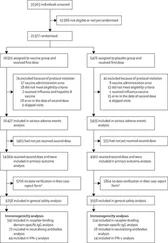They were eager to try out this natural delivery. I was being a problem. Then something welled up inside of me, it was a colossal no. I said, “Why am I not having a C-section? Why am I not having it now? The longer we wait, the greater the danger of infection to my baby, right? Didn’t you just tell me that? What are we waiting for? I want a C-section, and I want it now!” … Afterwards the doctors were angry at me. They were annoyed by my willfulness. I was there for a few days. The nurses were running off with you against my instructions to the incubators where they stuck enormous needles, IVs, in your little hand. I hobbled after you with my cart containing my IVs, ticking off the nurses. You developed asthma in the incubators, possibly a drug reaction.
The doctors blamed it on your premature birth.
It is clear from Susan’s writing that she felt a need to control her world—a symptom often seen in people whose lives are out of control. This was her child, and she wanted to make sure that he was okay.
More than two years later on June 2, 1985, Susan gave birth to Eli, while Gabriel arrived on January 10, 1987. Though Susan was a stay-at-home mom who felt comfortable with her boys, she and Felix enrolled Adam in day care shortly after Gabriel was born. It seemed the right time for Adam to get out and enjoy the company of children his age, so the couple placed him in a private day care program in the home of an upper-middle-class family. There was only one other child in the program, the caretaker’s own child, who was anxious for a companion.
After a diligent check of references, Adam attended the program about eighteen hours per week, in six-hour intervals. One morning, while standing in the kitchen getting ready for breakfast, Adam told his mother he didn’t want to go to “school” that day.
“Why don’t you want to go to school today?” Susan reportedly asked him.
“I don’t know, I’m tired,” Adam told her, playfully pulling open a drawer in the kitchen.
Adam said that his mother asked if anybody at the preschool had “touched” him.
He simply said, “Yeah, that’s it.”
Then only four and still in diapers, he later claimed he was not even aware of what it was she was asking him. But his response set off a chain reaction that landed Adam in therapy. According to Adam’s sworn testimony, his desire to stay home from day care that morning led to his mother’s belief that he had been sexually abused there. The Polks took Adam to see a therapist who reportedly confirmed that the youngster had been the victim of ritualistic sexual abuse during his four months at the day care program.
The unfortunate reality was that the fears that the Polks were experiencing were nothing new. At that time, allegations of ritualistic sexual abuse of children were making headlines. Newspapers in California were reporting charges of sexual abuse at a preschool in Manhattan Beach. The mother of a male student there had complained to police that a part-time aide at the McMartin Preschool had molested her son. Police found no physical evidence to support the claim, and the district attorney declined to prosecute. However, the allegations sparked a panic in the community when the chief of the Manhattan Beach Police Department circulated a confidential letter to parents whose children had attended the preschool. The letter speculated that the part-time aide, the son of the school’s owner, might have forced students “to engage in oral sex, fondling of genitals, buttocks or chest area and sodomy,” and it urged parents to question their children. The letter included no proper way to do this, and interviewing techniques employed by parents and local therapists led to hundreds of false complaints.
A local TV station took the story one step further, proposing that the preschool might be linked to child porn rings in nearby Los Angeles. Only later did it surface that the mother of the alleged victim was an alleged alcoholic and had been diagnosed as a paranoid schizophrenic.
During that same period, allegations of ritualistic abuse were lodged against employees of the Presidio Child Development Center, a day care center run by the U.S. Army in San Francisco. Parents charged that a satanic cult was operating out of the center and systematically victimizing the young student body. Reports that children had been transported to private homes, where they were forced to engage in satanic and sadistic sexual acts, led to a police investigation.
With these allegations rampant, Susan and Felix began to subscribe to the hysteria, believing the worst about the people who cared for Adam. Felix, perhaps because of his personal and professional backgrounds, was acutely vulnerable to the spreading paranoia. Taking matters into his own hands, Felix authored a report entitled Reflections on Psychology, describing these cults as “very sophisticated” and claiming that “some were set up by the CIA as a way to learn/teach mind control.” In Adam’s case, Felix alleged that the perpetrators were “homosexual cultists” who had “sodomized and filmed” the boy during his hours in day care.
Using the paper as a catalyst, he took his views to the Fourth Annual Two-Day Conference of the California Consortium of Child Abuse Counsels in Berkeley in 1988, where he outlined the alleged abuse. Felix was one of two speakers to address the audience that day. The first was a woman who claimed to have been a survivor of ritualistic child abuse at the hands of cultists, some of whom she described as family members. Interestingly, she was also a patient of Dr. Polk’s who was treating her for the trauma.
Felix asked that he be introduced not as a therapist but as a “parent of a ritualistically abused child,” although he provided the audience with an overview of his credentials during the twenty-five minute address. Displaying a piece of paper he held in his hand, Felix explained that he was going to read aloud a letter that his not-quite five-year-old son had written to the governor of California.
“I want you to get the bad people because I hate them,” Felix began in a deliberate monotone. “I want to punch them and my daddy wants to punch them…. And my mommy can bite them, and that’s all she can do…. And my brother Eli can throw a truck at them.”
To shock the audience, he detailed the abuse his son had allegedly suffered during his time at the day care center. “He was taken from the house in what he called a school bus,” he recited. “Other children were picked up along the way.” They were taken to what “sounds like a warehouse, with a cement floor…. It had cages, and a stage, people dressed in red triangular masks, professional cameras like on TV sets. There were performers. He and other children were raped on stage in every form. Children were killed.”
Felix said that Adam’s most troubling recollection was that of a “baby put in a plastic bag and hammered to death.”
According to Felix, the youngster also claimed to have witnessed “other ceremonies” in which adults and children drank blood and urine and ate feces and a “bloody substance” that he believed was flesh from bowls. Some of the children were black, and others might have been mentally retarded, he contended.
He next insisted that his young son “is now a multiple personality” with three clear identities: “a girl because he was professionally made up and raped on stage; a killer because he has the eyes of a killer because he was looked at by people who were killers and he has their glance; and he’s himself…a wonderful little boy.”
The statements were remarkable—and outrageously unbelievable. Perhaps Felix was trying to “right” his own childhood trauma when he took up Adam’s alleged cause. It is possible that Susan had made up the elaborate tales of abuse or that she simply borrowed them from the headlines and “transferred” them onto her young son. As a Holocaust survivor with his own mental issues, it may be that Felix indulged in a “shared delusion” with his wife. Perhaps his crusade to “get the bad people” was a way to right what had been so wrong when he was a small boy. It is not impossible that Felix Polk truly believed that something bad had happened to his son. After all, he purportedly witnessed men in black helmets wearing swastikas systematically round up men, women, and children for extermination. In Felix’s mind, the two incidents may have been fused; his own childhood trauma and the one he believed happened to his son. Indeed, he spoke of his family’s ordeal at the hands of the Nazis during his presentation in Berkeley.
Читать дальше











